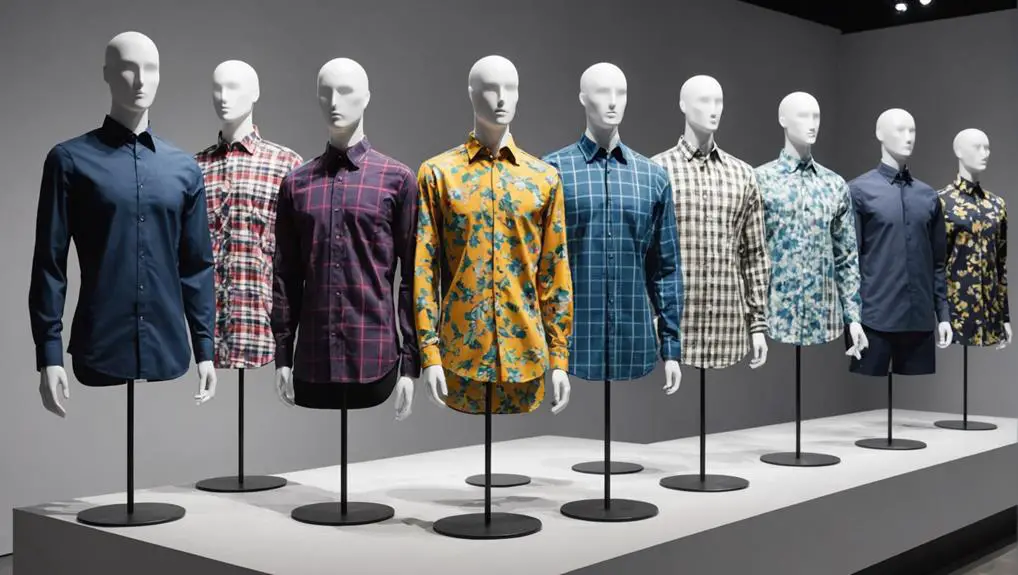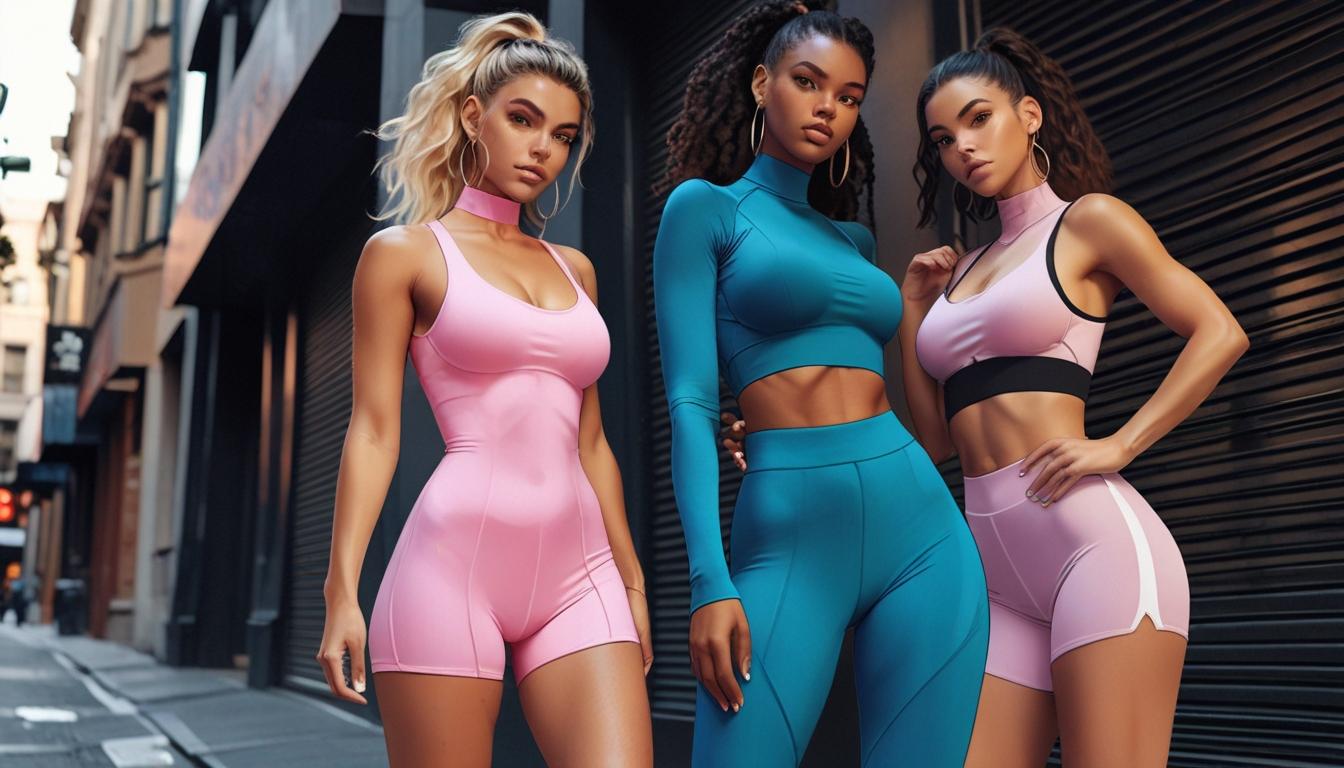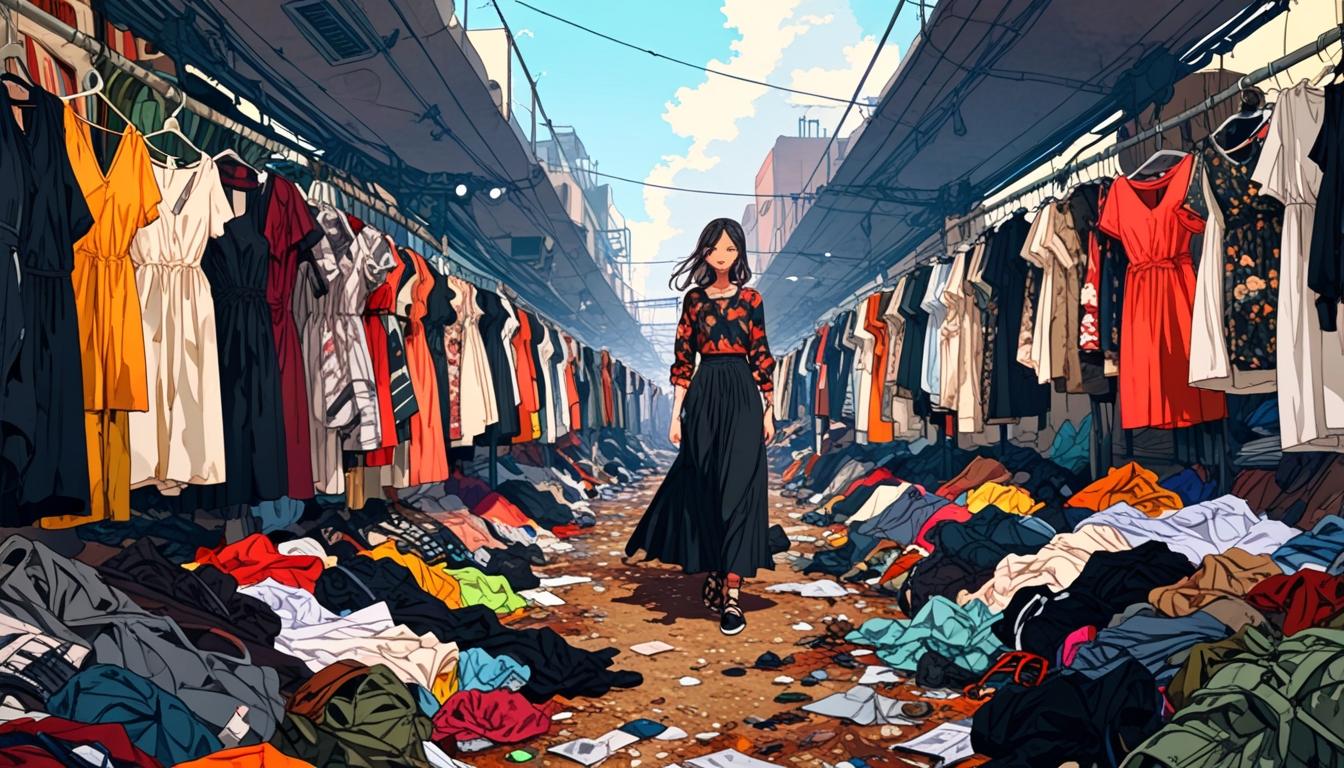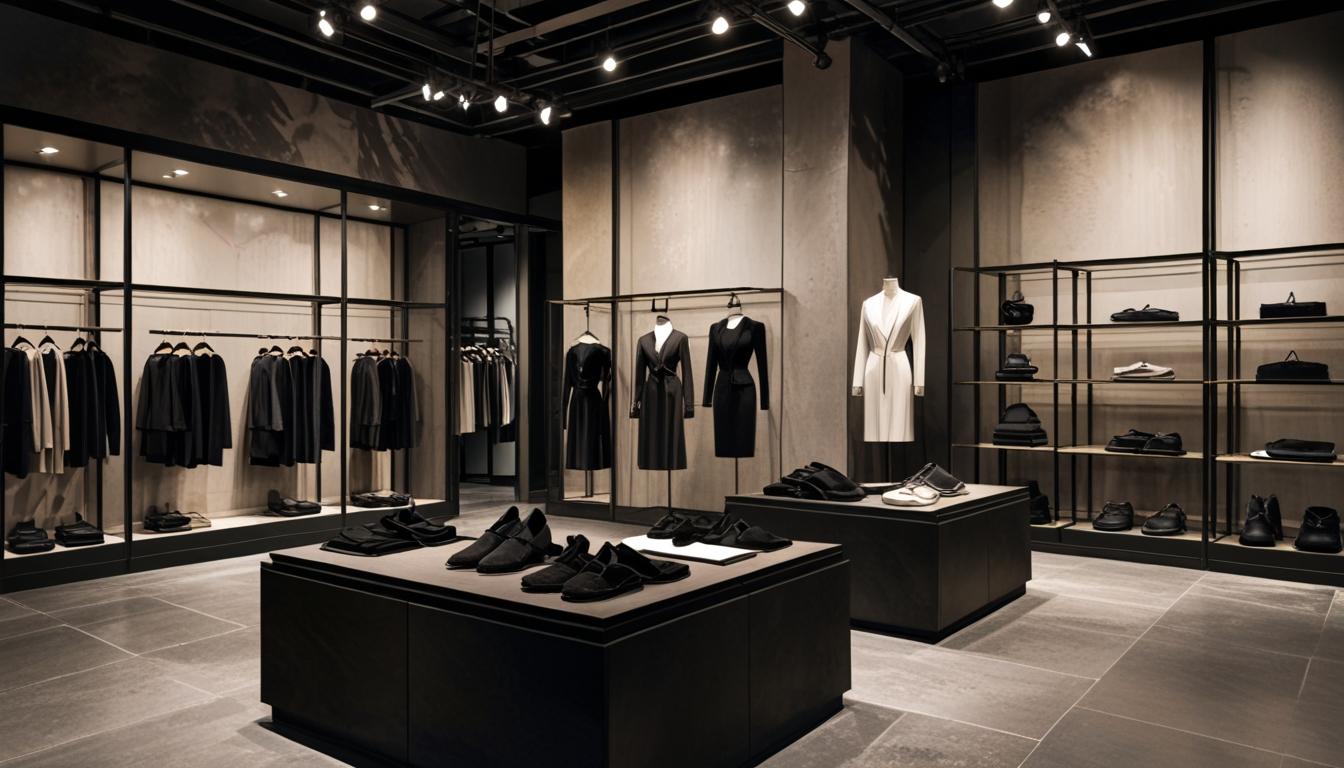In the 2010s, men's shirts transformed dramatically, prioritizing comfort and bold expression. You'd find oversized and relaxed fits dominant in wardrobes, moving away from the restrictive slim styles. Streetwear's influence brought graphic tees and vibrant prints to the forefront, while the casualization of formal wear meant you could dress up a lightweight button-up with joggers and sneakers effortlessly. Sustainable fabrics emerged, offering eco-friendly options without sacrificing style. Whether you're sporting a flannel or an Oxford, the decade celebrated versatility and individuality. If you're curious to discover more about these trends and their impact, keep exploring the fascinating evolution of men's fashion.
Shift to Relaxed Fits
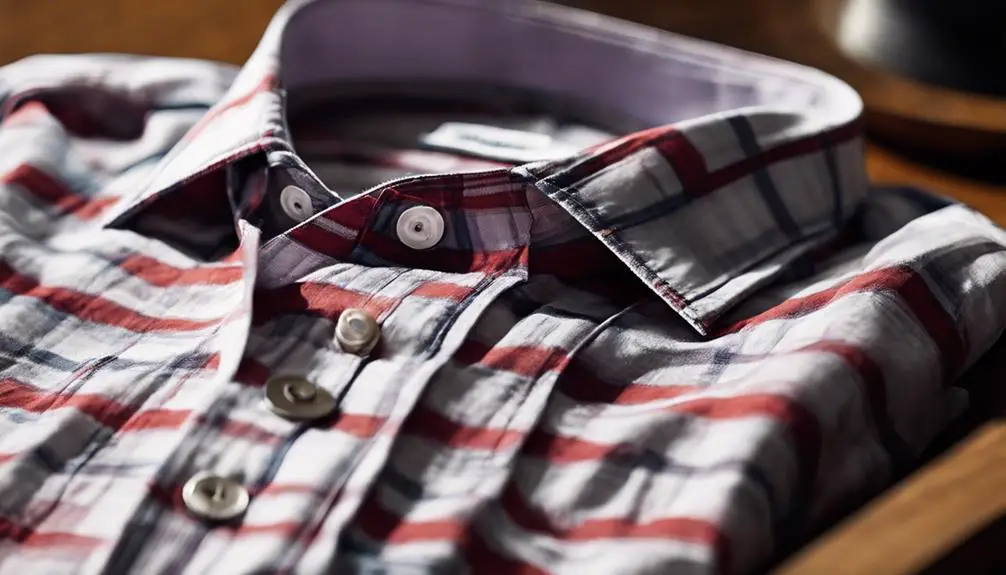
In the 2010s, a noticeable shift emerged in men's fashion as relaxed fits took center stage, transforming the way you approach your wardrobe. Gone were the days of stiff, slim-fit shirts; instead, comfort became a priority, allowing you to embrace a casual chic aesthetic. You found yourself gravitating towards loose-fitting styles, like boxy cuts and oversized designs, which made getting dressed not just stylish but also effortless.
The rise of athleisure and streetwear played a significant role in this trend, encouraging you to pair relaxed-fit shirts with joggers or casual trousers for that laid-back look. Lightweight fabrics and breathable materials became your go-to choices, as they offered versatility for various occasions, from brunch to casual outings.
This shift also coincided with a cultural movement celebrating individual expression and personal style. You began experimenting with your wardrobe choices, mixing and matching different pieces to create a unique look that feels true to you. The relaxed fit trend not only redefined comfort in menswear but also empowered you to express yourself through fashion, proving that style doesn't have to sacrifice ease.
Bold Patterns and Colors
Stepping into the 2010s, you couldn't help but notice a vibrant wave of bold patterns and colors taking over men's shirts, shaking up traditional styles. This trend marked a significant shift towards more expressive and individualized fashion choices, making a strong statement in everyday wear. Here are some highlights:
- Floral prints: Perfect for adding a fresh, lively touch to your outfits.
- Geometric designs: These patterns offered a modern twist, ideal for the contemporary aesthetic.
- Checks and plaids: A classic that evolved to include bolder hues, appealing to casual chic.
- Tailored shirts: Merging classic tailoring with vibrant colors, they catered to fashion-forward individuals.
With influencers showcasing these styles on social media, you found yourself inspired to experiment with your wardrobe. Monochromatic outfits became a canvas for layering techniques, allowing your statement shirts to shine. As you embraced this trend, you noticed how these bold patterns and vibrant colors transformed your casual looks into eye-catching ensembles. The shift towards streetwear further encouraged you to step outside the box, making fashion not just about clothing, but about expressing your unique personality.
Influence of Streetwear
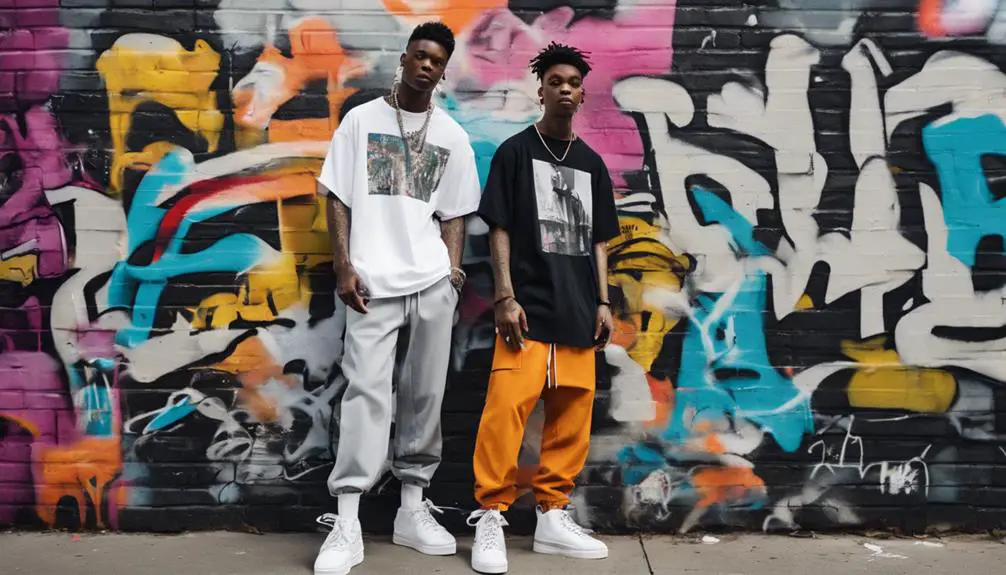
Streetwear took the fashion world by storm in the 2010s, redefining how men viewed their shirts. Oversized shirts became the go-to choice, shifting the focus from traditional tailored silhouettes to relaxed, comfortable styles. You found yourself gravitating towards graphic tees, adorned with bold logos and artistic prints, each one echoing cultural references that reflected your individuality. This movement didn't just stop at casual wear; the lines blurred between high fashion and streetwear, resulting in unexpected collaborations between luxury brands and streetwear labels. Limited edition shirts emerged, showcasing innovative designs that elevated your everyday look.
Flannel shirts made a notable comeback, seamlessly fitting into layered outfits, emphasizing both comfort and a laid-back aesthetic characteristic of streetwear culture. As you explored this style evolution, you noticed a growing emphasis on quality craftsmanship. Brands prioritized unique fabrics and meticulous construction, catering to your desire for authenticity in menswear. In this vibrant era, streetwear reshaped your wardrobe choices, encouraging you to embrace casual styles that are as expressive and dynamic as you are. The influence of streetwear truly transformed how men approach their shirts, blending comfort with a fresh sense of identity.
Rise of Sustainable Fabrics
The 2010s marked a pivotal shift in menswear as sustainable fabrics emerged as a defining trend in your wardrobe. You might've noticed that the shirts you reach for now are often made from eco-friendly materials, reflecting a growing commitment to the environment. Here are four sustainable options that became popular:
- Organic Cotton – Grown without harmful pesticides, it's a staple for eco-conscious shirts.
- Tencel – This fabric, made from sustainable wood sources, combines luxury with a low environmental impact.
- Recycled Polyester – Transforming plastic waste into stylish shirts, it's a game-changer for reducing landfill contributions.
- Certifications – Labels like Global Organic Textile Standard (GOTS) and Fair Trade help you identify ethical practices in your clothing.
With major brands like Patagonia and Eileen Fisher leading the charge, the demand for shirts crafted from sustainable fabrics surged. Consumers like you sought transparency in supply chains, pushing the industry away from fast fashion. Small, innovative brands emerged, prioritizing quality and ecological responsibility, reshaping how you view menswear. In the 2010s, your wardrobe not only became stylish but also a reflection of your values.
Casualization of Formal Wear
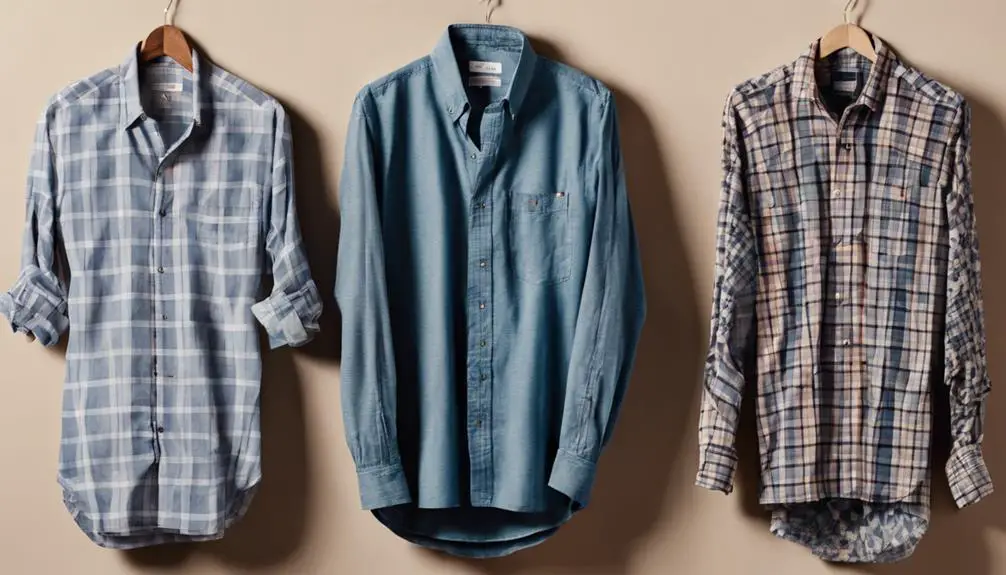
As you navigated the evolving landscape of menswear in the 2010s, the casualization of formal wear transformed your approach to dressing for work and special occasions. Traditional dress shirts morphed into versatile pieces, crafted from comfortable materials like lightweight linen and cotton blends. This shift emphasized comfort without sacrificing style, allowing you to embrace a more laid-back attitude. Vintage clothing often reflects these evolving styles, with unique design elements that highlight a blend of comfort and sophistication. With the rise of athleisure, the lines between formal and casual blurred. You found yourself pairing casual button-up shirts with tailored joggers and even sneakers, embodying the smart-casual trend that prioritized ease of movement. Brands began experimenting with oversized silhouettes and bold patterns, incorporating elements of streetwear that made formal shirts feel fresh and contemporary.
Influencers showcased these new styles on social media, demonstrating how formal shirts could adapt effortlessly between casual outings and professional settings. You realized that dressing well didn't have to mean feeling restricted; instead, it was about expressing your individuality while maintaining a polished look. This casualization of formal wear ultimately encouraged you to explore your style, making dressing up feel more accessible and enjoyable than ever before.
The Role of Influencers
Throughout the 2010s, influencers became key players in shaping men's shirt trends, making their mark through vibrant social media platforms. Their impact was undeniable, driving trends that redefined how you approach your wardrobe. Here are four ways they influenced shirt styles:
- Collaborations with brands led to exclusive, limited-edition collections that often sold out within hours.
- The rise of micro-influencers allowed for targeted marketing, focusing on specific styles like oversized fits and bold patterned designs.
- Influencers showcased the versatility of shirts, demonstrating how you could easily shift from casual occasions to more formal occasions with the right styling.
- User-generated content featuring influencers in various shirts built authenticity, shifting your purchasing decisions toward the styles they endorsed.
These influencers didn't just promote shirts; they created a lifestyle that resonated with followers. By highlighting the latest trends and encouraging creative styling, they played a pivotal role in making shirts a staple in your closet, whether you were dressing up or keeping it casual. Their influence helped you discover new ways to express your personal style through shirts, blending comfort with fashion.
Iconic Shirt Styles
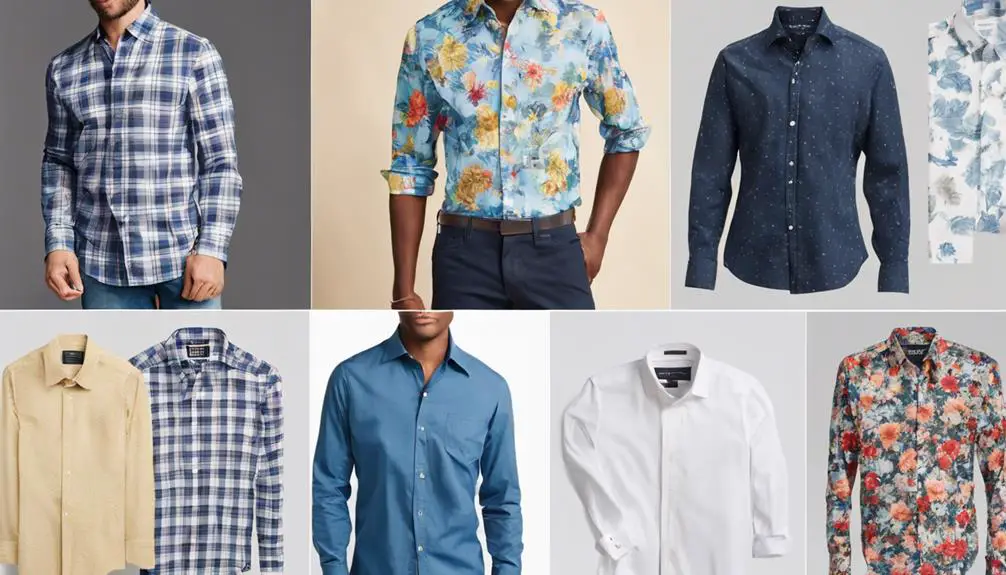
Influencers not only shaped how you viewed shirt styles but also highlighted specific iconic designs that defined the 2010s. You probably noticed the rise of slim-fit styles, making classic button-down shirts a staple in both casual and business casual wardrobes. They offered a tailored look without sacrificing comfort. Flannel shirts, with their cozy appeal, gained traction mid-decade, echoing the grunge revival and your desire for relaxed dressing.
As the years rolled on, the Oxford shirt emerged as a versatile essential, easily dressed up with blazers or down with jeans, making it perfect for any occasion. Summer saw a surge of casual short-sleeve shirts adorned with vibrant prints, perfectly aligning with the athleisure trend's emphasis on comfort and style.
Towards the decade's end, you likely embraced oversized and relaxed-fit shirts, reflecting a shift toward laid-back silhouettes. These shirts mixed effortlessly with joggers or tailored shorts, embodying a more casual approach to men's fashion. Whether you were dressing up or keeping it casual, these iconic shirt styles marked a transformative period in your wardrobe choices.
Fabric Innovations
Embracing the latest fabric innovations, men's shirts in the 2010s underwent a remarkable change that prioritized both style and performance. You saw a notable rise in technical fabrics, designed with your comfort in mind. Here are four key advancements that defined this decade:
- Moisture-wicking materials: Keeping you dry and comfortable throughout the day.
- Wrinkle-resistant blends: Making upkeep a breeze while maintaining a polished appearance.
- Stretch fabrics: Enhancing mobility and comfort, perfectly catering to the athleisure trend.
- Eco-friendly options: Featuring organic cotton and recycled materials, reflecting your demand for sustainable fashion.
These innovations in fabric technology have not only elevated style but also performance. Smart textiles began to gain traction, incorporating features like temperature regulation and odor control, catering to your tech-savvy lifestyle. With each shirt, you embraced a fusion of functionality and fashion, allowing you to shift seamlessly from the office to after-work gatherings. As you navigated the decade, these advancements guaranteed you didn't have to sacrifice comfort for style, making your wardrobe both practical and trendy.
Personal Expression in Fashion
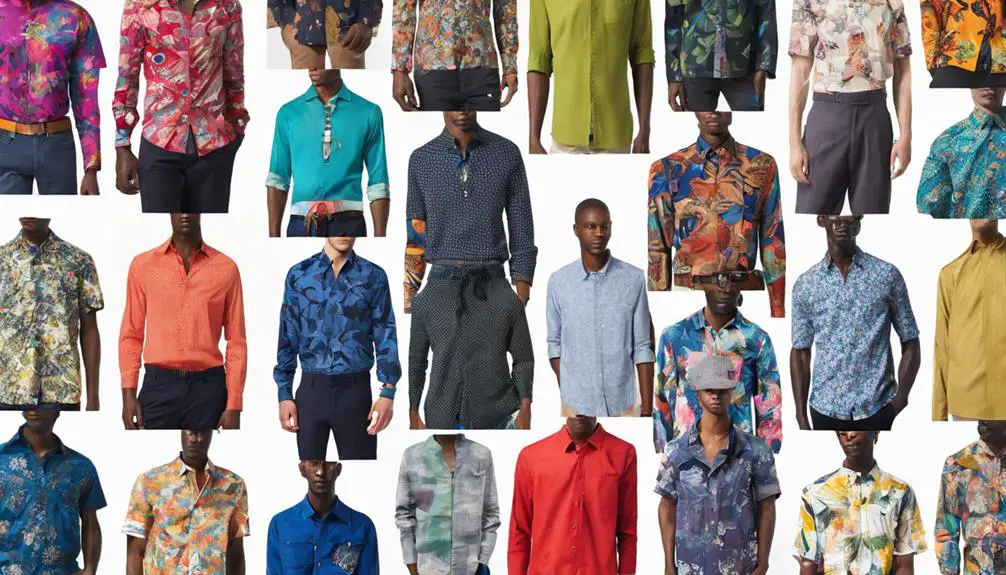
In the 2010s, men's shirts transformed into a canvas for personal expression, reflecting a shift towards casual comfort and individuality. You started to see casual fits take center stage, moving away from stiff, formal styles. Graphic tees and patterned button-ups emerged as staples, allowing you to showcase your unique style while aligning with the streetwear movement. Oversized silhouettes became the norm, offering a relaxed aesthetic that felt both modern and approachable. This era also saw vintage clothing labels gain popularity, as enthusiasts sought to identify and appreciate the history behind their garments, enhancing their overall fashion experience through vintage tag identification.
The rise of athleisure further influenced shirt designs, blending sports-inspired elements with everyday wear. This fusion blurred the lines between gym and street, making it easier than ever to dress comfortably without sacrificing style. Customization and personalization took off, with brands offering bespoke options that let you tailor your shirts to your preferences, ensuring a one-of-a-kind look.
Influencer culture played a pivotal role, as social media platforms became the go-to stage for showcasing personal styles. This democratization of fashion meant that anyone could access trending looks and express themselves through their shirt choices. You could curate your wardrobe to reflect your personality, making each shirt a statement of who you are in this vibrant decade.
Cultural Influences on Design
As personal expression flourished through fashion, cultural influences began to shape the design of men's shirts in notable ways. You'd notice this evolution reflected in several key trends:
- Casual chic became the norm, blending comfort with style.
- Bold graphic prints and oversized silhouettes drew inspiration from street culture.
- Athleisure emerged, making sports-inspired shirts like polos essential for both casual and semi-formal settings.
- Sustainability took center stage, pushing brands to adopt eco-friendly materials.
These cultural influences transformed men's shirts into versatile wardrobe staples, allowing for self-expression without compromising on comfort. The merging of traditional tailoring with relaxed fits created a unique aesthetic that appealed to a wider audience. Hip-hop and street culture infused designs with vibrant patterns and bold graphics, making each piece a statement. The rise of influencer culture further propelled these styles, with social media showcasing innovative designs and collaborations that resonated with younger consumers.
As the demand for sustainability grew, more brands turned to ethical production practices, ensuring your favorite shirts not only look good but feel good too. The 2010s truly marked a dynamic shift in men's shirt design, driven by cultural influences that celebrated individuality.
Frequently Asked Questions
What Shirts Were Popular in the 2010s?
In the 2010s, you'd find bold patterned button-ups, trendy slim-fits, and versatile white shirts dominating wardrobes. Casual, lightweight fabrics ruled summer, while graphic tees expressed individuality, paving the way for oversized styles by decade's end.
What Did Guys Wear in the 2010s?
In the 2010s, you embraced relaxed fits, opting for oversized flannels and sporty button-ups. Bold patterns flourished in your wardrobe, while sustainability became essential, with eco-friendly fabrics reflecting your evolving sense of style and responsibility.
What Brands Were Popular in the 2010s?
In the 2010s, you'd find popular brands like Uniqlo and J.Crew offering stylish essentials, while H&M and Zara kept you trendy with fast fashion. Luxury names like Gucci showcased bold designs, transforming your wardrobe options.
What Shirts Did People Wear in the 2000s?
In the 2000s, you wore fitted shirts, vibrant colors, and bold patterns. Button-downs paired with jeans were your go-to, while casual flannel shirts added a grunge touch to your layered looks for that effortless style.
